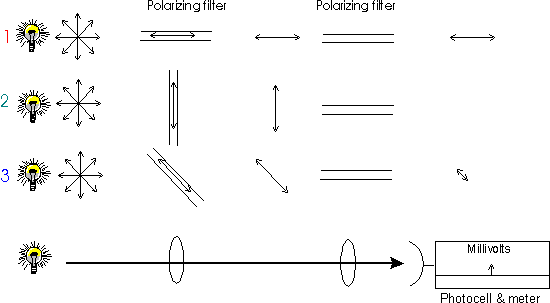Polarizing Light

On the right is a cartoon representation of how polarizing filters work and what they do. The double arrowed lines
represent, in only two dimensions, random electrical fields of a light wave. In fact, these electrical fields are in all
directions perpendicular to the direction of light wave propagation. The effect of a polarizing filter is to restrict the
electrical field to a single plane. The angle of this plane depends on the angle of the filter relative to the direction of
light propagation.
The maximum amount of light transmitted through the two
Polaroid filters occurs in #1
because the orientation of both Polaroid filters is the same. In
#2 the orientation of the filters
differs by 90 degrees, so no light gets through. In #3 they differ by 45 degrees so some light
is transmitted.
Perceptually, the light would appear brightest in #1, absent in #2
and dim in #3.
The second polarizing filter on the right is often called the
"analyzer."
More information on polarization of light
Table of Contents
Subject Index
Table of Contents [When not using framtes]
